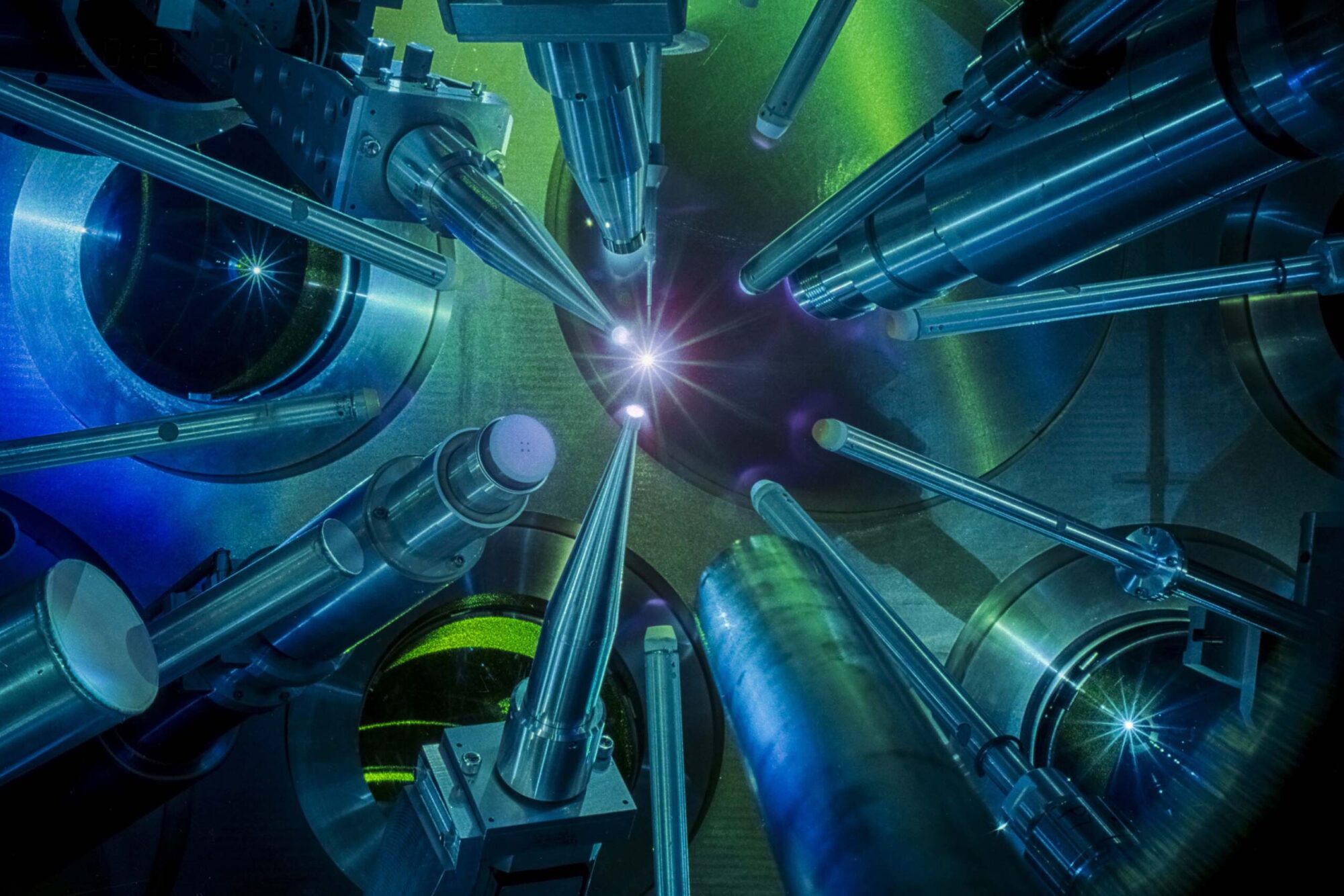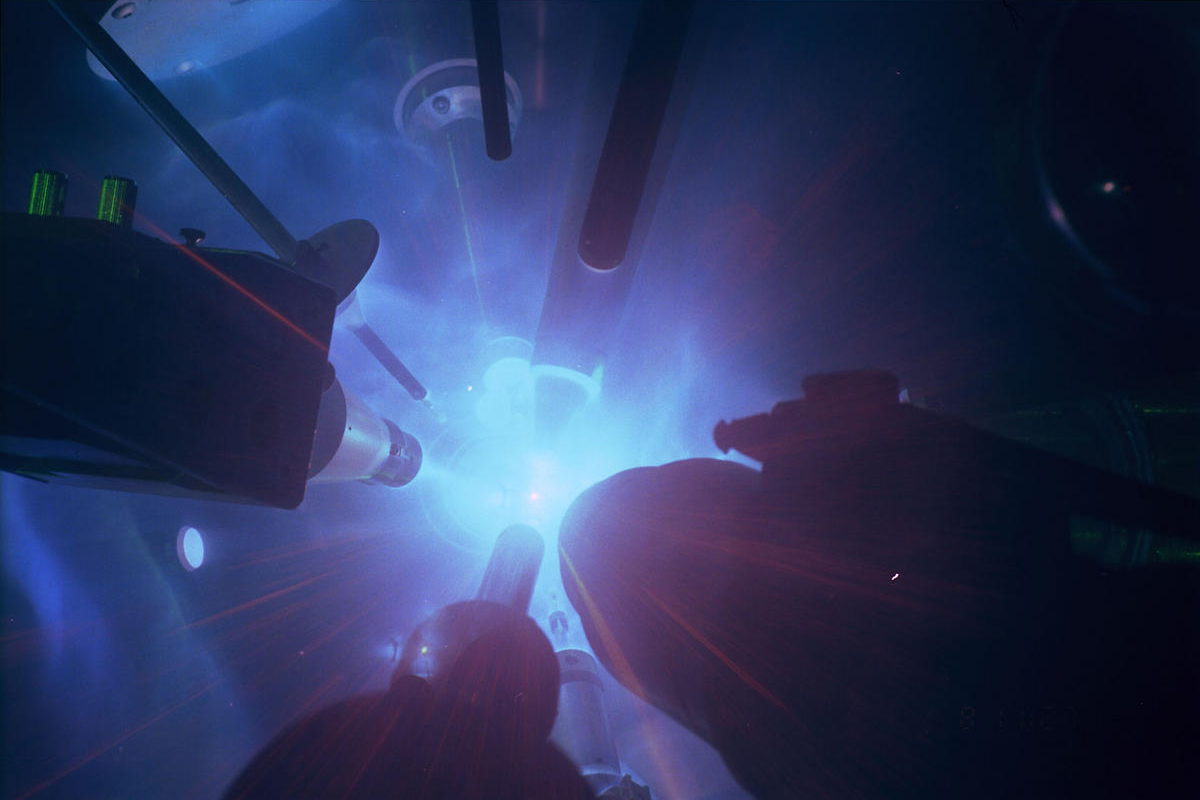
Inertial Fusion Energy
At LLE, scientists are advancing inertial fusion energy (IFE)—a promising approach to generate power by replicating the same process that fuels the sun.
Using the OMEGA and OMEGA EP lasers, researchers carry out thousands of experiments each year to study how intense bursts of laser light can compress and heat fuel capsules until fusion occurs. This research is central to building the science and technology base for future fusion energy systems that can strengthen US energy security and independence.

What is Inertial Fusion Energy?
Unlike conventional nuclear power, which splits atoms, fusion joins light atomic nuclei—typically, isotopes of hydrogen such as deuterium and tritium—to release vast amounts of energy. In IFE, tiny fuel pellets are rapidly compressed and heated using powerful lasers, causing them to implode and reach the extreme temperatures and pressures needed for fusion to occur. The resulting fusion reactions release energy that can be captured and converted into a clean, reliable, and stable source of energy.
IFE-STAR Ecosystem
IFE-STAR is a DOE-funded, LLE-led national platform dedicated to accelerating the development of inertial fusion energy through research, workforce development, and innovation. It connects universities, national labs, industry, and government to build a vibrant ecosystem focused on turning fusion science into practical energy solutions.
The program supports groundbreaking research while empowering students and early-career scientists with hands-on training, mentorship, and access to leading-edge fusion facilities. Guided by core principles—Educate, Innovate, Accelerate, Integrate, and Collaborate—IFE-STAR fosters scientific and technological collaboration and equips the fusion workforce of tomorrow.
IFE-COLoR Consortium
Led by LLE with partners from UCLA, the University of Nebraska–Lincoln, and industry—IFE-COLoR is a DOE-funded national research hub focused on a critical technical challenge for inertial fusion energy: mitigating laser–plasma instabilities that have limited energy coupling efficiency for decades.
Successfully coupling more than 90% of laser energy into fuel capsules could make direct-drive IFE both practical and economical. To validate this science, the team integrates advanced laser systems at LLE’s new Fourth-generation Laser for Ultrabroadband eXperiments (FLUX) facility with sophisticated plasma modeling and hydrodynamic simulations. IFE-COLOR exemplifies collaborative innovation targeting the foundational science and technology needed to build the world’s first laser-driven fusion power plant.
The Case for Direct-Drive ICF
Direct-drive inertial confinement fusion offers a straightforward and efficient approach to producing fusion. This method can couple more than 90% of the laser’s energy to the target, increasing the likelihood of ignition with smaller laser systems around 250 kJ. Emerging technologies like the additive manufacturing of foam targets enable fast, scalable production. Both efficient coupling and rapid target production are keys to achieving energy on the grid with inertial fusion energy.




